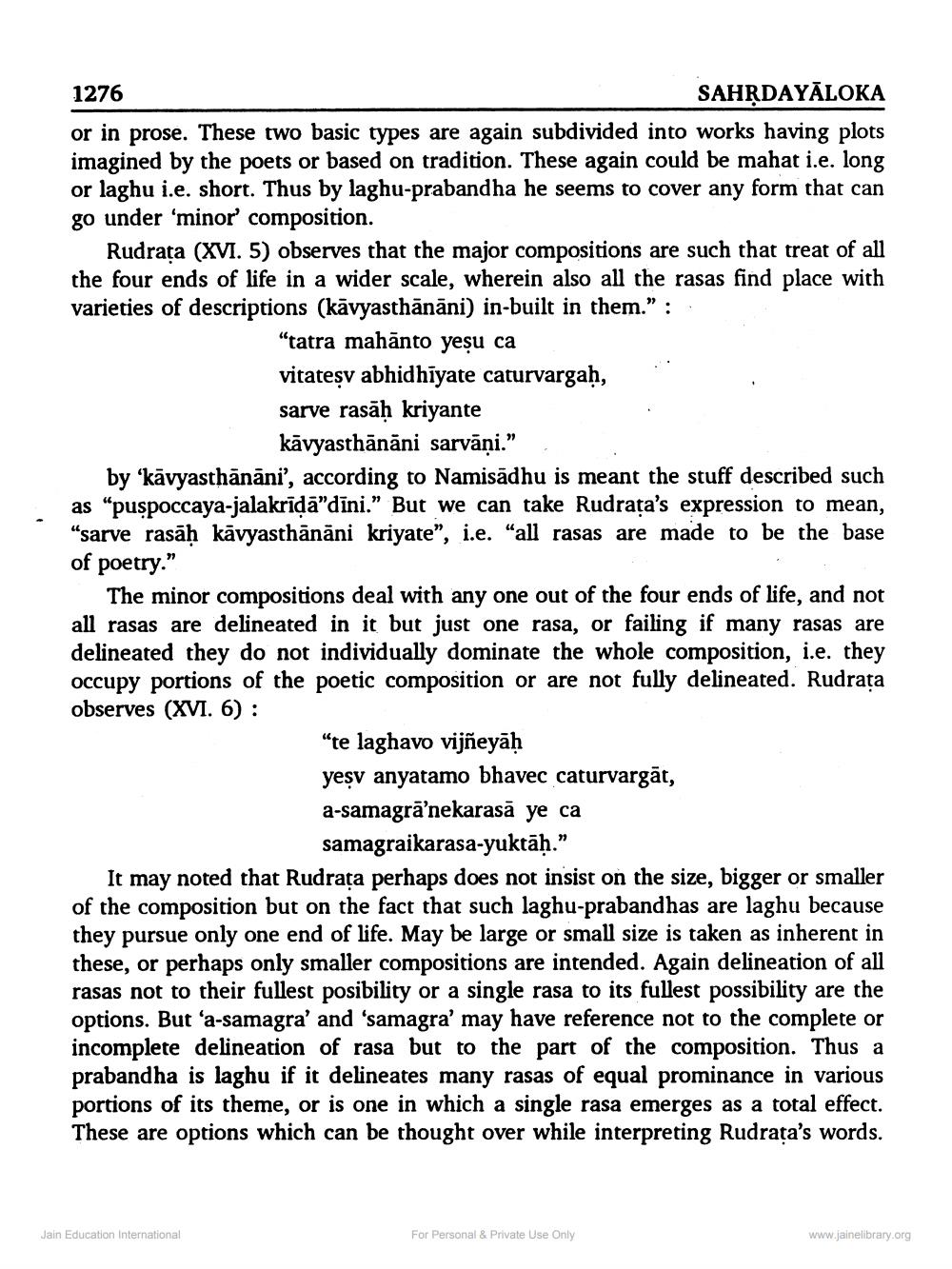________________
1276
SAHRDAYĀLOKA or in prose. These two basic types are again subdivided into works having plots imagined by the poets or based on tradition. These again could be mahat i.e. long or laghu i.e. short. Thus by laghu-prabandha he seems to cover any form that can go under 'minor' composition.
Rudrata (XVI. 5) observes that the major compositions are such that treat of all the four ends of life in a wider scale, wherein also all the rasas find place with varieties of descriptions (kāvyasthānāni) in-built in them." :
"tatra mahānto yeșu ca vitateşv abhidhīyate caturvargaḥ, sarve rasāḥ kriyante
kāvyasthānāni sarvāṇi." by 'kavyasthānāni', according to Namisadhu is meant the stuff described such as “puspoccaya-jalakrīdā”dīni.” But we can take Rudrata's expression to mean, "sarve rasāḥ kāvyasthānāni kriyate", i.e. "all rasas are made to be the base of poetry.”
The minor compositions deal with any one out of the four ends of life, and not all rasas are delineated in it but just one rasa, or failing if many rasas are delineated they do not individually dominate the whole composition, i.e. they occupy portions of the poetic composition or are not fully delineated. Rudrata observes (XVI. 6) :
"te laghavo vijñeyāḥ yeşv anyatamo bhavec caturvargāt, a-samagrā’nekarasā ye ca
samagraikarasa-yuktāḥ.” It may noted that Rudrata perhaps does not insist on the size, bigger or smaller of the composition but on the fact that such laghu-prabandhas are they pursue only one end of life. May be large or small size is taken as inherent in these, or perhaps only smaller compositions are intended. Again delineation of all rasas not to their fullest posibility or a single rasa to its fullest possibility are the options. But ‘a-samagra' and 'samagra' may have reference not to the complete or incomplete delineation of rasa but to the part of the composition. Thus a prabandha is laghu if it delineates many rasas of equal prominance in various portions of its theme, or is one in which a single rasa emerges as a total effect.
se are options which can be thought over while interpreting Rudrata's words.
Jain Education International
For Personal & Private Use Only
www.jainelibrary.org




